Last updated on
Discover the secrets to maintaining pristine stone floors in your kitchen with our easy-to-follow cleaning guide that ensures longevity and a sparkling finish.
Stone floors are a beautiful addition to any kitchen. They add a touch of elegance and sophistication that can’t be matched by other flooring materials.
However, keeping them clean can be a challenge, especially if you’re not sure how to do it properly. If you’re struggling with dirty or stained stone floors in your kitchen, don’t worry! In this article, we’ll share some expert tips on how to clean stone floors in your kitchen effectively and efficiently.
So grab your cleaning supplies and let’s get started!
What's Inside
Assessing Your Stone Floor Type
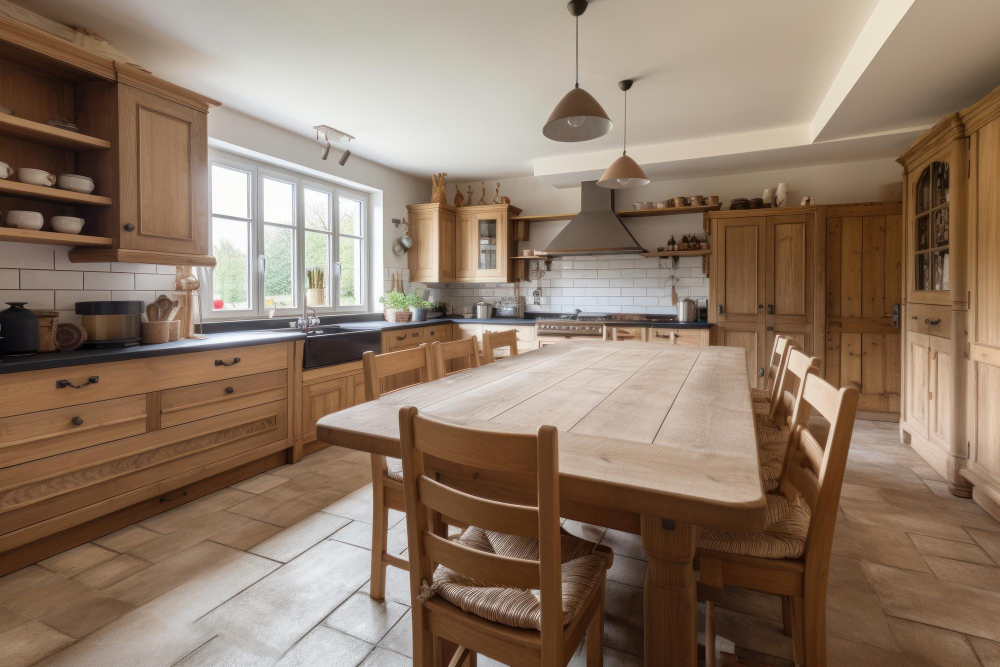
Different types of stones require different cleaning methods and products, so it’s essential to identify what kind of flooring you’re dealing with before starting any cleaning process.
To determine the type of stone floor in your kitchen, look for identifying features such as color, texture, and pattern. Some common types include marble, granite, slate or limestone.
Once you’ve identified your specific type of flooring material accurately; research its properties online or consult a professional cleaner for advice on how best to clean it without causing damage. This will help ensure that you use appropriate cleaners and techniques that won’t harm the surface while effectively removing dirt and stains from your beautiful kitchen floors.
Gathering Necessary Cleaning Supplies

Having everything on hand will make the process more efficient and ensure that you don’t miss any spots. Here are some of the items that you’ll need:
- Soft-bristled broom or vacuum cleaner with a hard floor attachment
- Microfiber mop or soft cloth for wiping down surfaces
- pH-neutral stone cleaner (avoid acidic cleaners)
- Warm water in a bucket
- Stone sealer (if needed)
- Stain remover for specific stains like oil, grease, wine etc.
- Protective gloves
Make sure to read labels carefully before purchasing any products and avoid using harsh chemicals as they can damage your stone floors over time.
How to Prepare Stone Floors for Cleaning
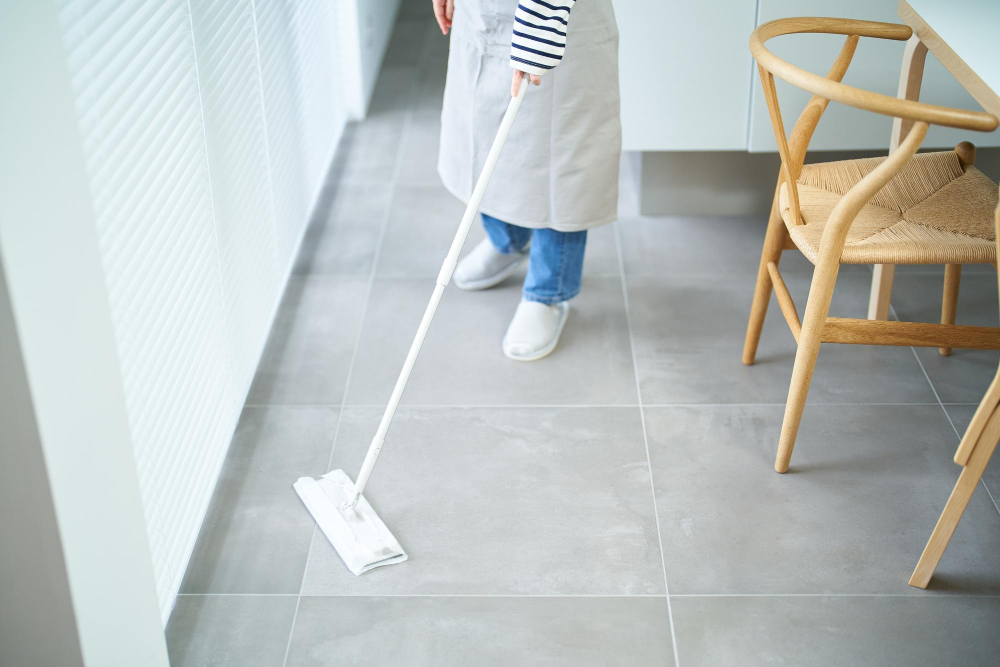
This step is crucial because it helps remove any loose dirt or debris that could scratch the surface during cleaning. To prepare your stone floor for cleaning, begin by sweeping or vacuuming the entire area thoroughly.
Next, use a damp mop to wipe down the surface of your stone floor gently. Avoid using too much water as this can cause damage and discoloration over time.
Instead, use a slightly damp mop and change out the water frequently as needed.
If there are any stubborn stains on your stone floor that won’t come off with regular mopping techniques alone, consider using specialized cleaners designed specifically for natural stones like marble or granite.
Regular Cleaning Techniques
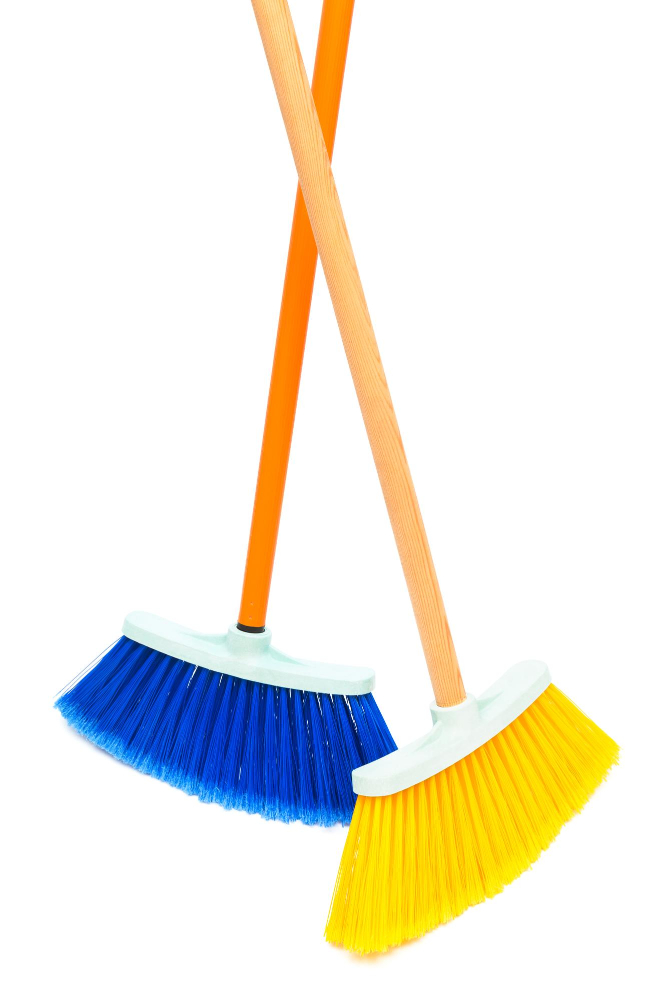
It’s important to clean up spills and stains as soon as possible, so they don’t have a chance to set in. For regular cleaning, you can use a soft-bristled broom or vacuum cleaner with a hard floor attachment to remove dirt and debris from the surface of the floor.
Once you’ve removed any loose dirt or debris, it’s time for mopping. Use warm water and mild dish soap or stone-specific cleaner that won’t damage your flooring material.
Avoid using acidic cleaners like vinegar or lemon juice on natural stones such as marble since they can cause etching over time.
Dip your mop into the solution and wring out excess water before starting on one section of the room at a time; this will prevent streaks from forming due to excessive moisture left behind by an overly wet mop head.
Rinse off any remaining soap residue with clean water after mopping each section before moving onto another area until all sections are cleaned thoroughly.
Mopping Techniques for Stone Floors
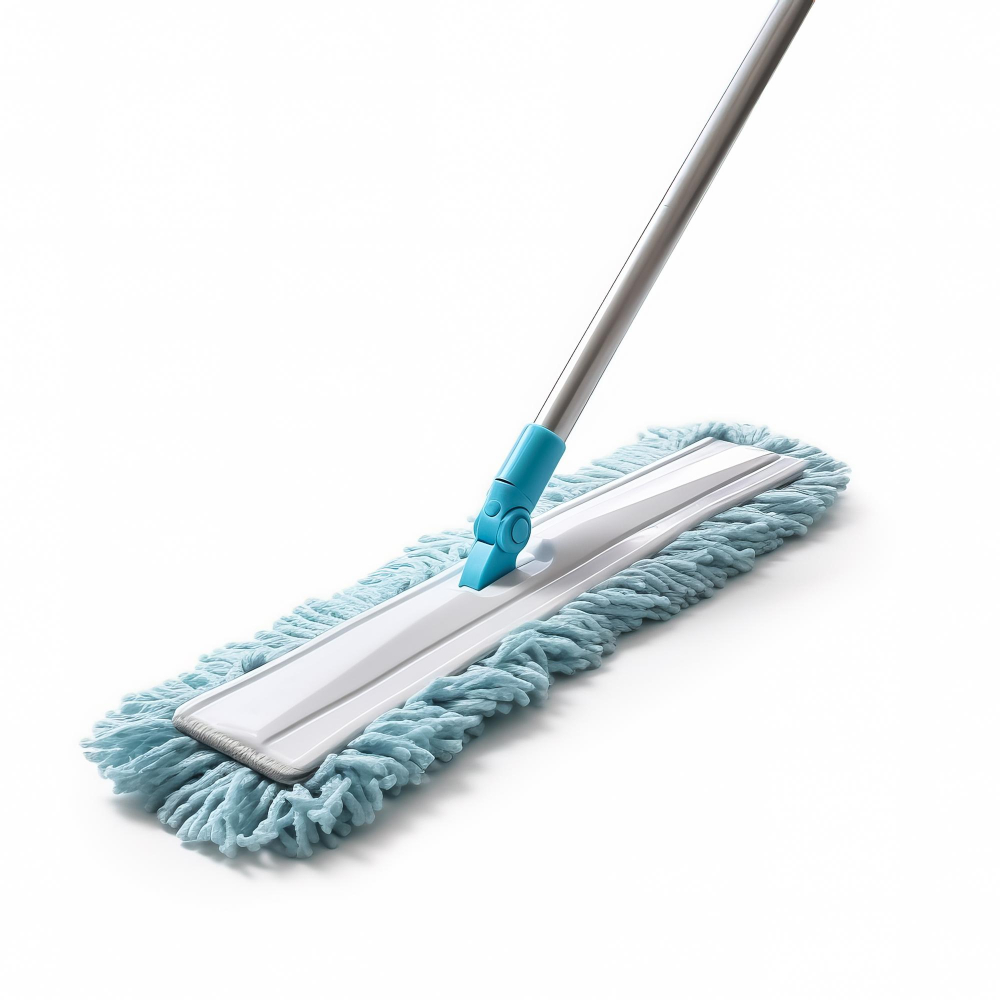
When mopping a stone floor, use a soft mop or microfiber cloth and avoid using abrasive materials like steel wool or scouring pads. Start by sweeping the floor with a broom or vacuum cleaner to remove any loose dirt and debris.
Next, fill your bucket with warm water and add some mild detergent specifically designed for natural stones. Dip your mop into the solution and wring out excess water before starting on one section of the floor at a time.
Be sure not to leave standing water on your stone floors as this can cause damage over time. Instead, work in small sections so that you can dry each area immediately after mopping with another clean towel or cloth.
Remember that different types of stones require different cleaning techniques; therefore always refer back to our guide when dealing with specific types of flooring material such as marble tiles versus granite slabs.
Cleaning Tile Lines and Crevices of Stone Floors
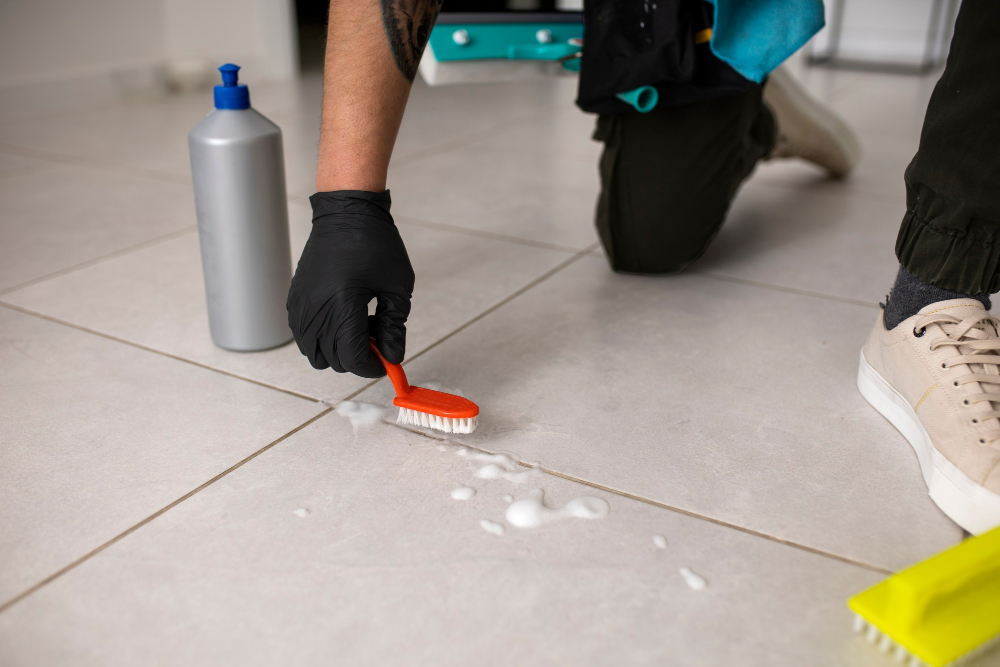
Dirt, grime, and food particles can easily get trapped in the small spaces between tiles or stones, making it difficult to remove them with regular cleaning techniques. To effectively clean these areas, you’ll need a few extra tools.
Start by using a stiff-bristled brush to scrub the grout lines gently. You can also use an old toothbrush for this task if you don’t have one on hand.
Next, mix some warm water with vinegar or baking soda to create a natural cleaning solution that’s safe for your stone floor.
Dip your brush into the solution and start scrubbing away at any dirt or stains in between tiles until they’re gone completely. Rinse off any excess cleaner with warm water and dry thoroughly using towels or rags.
Removing Different Types of Stains
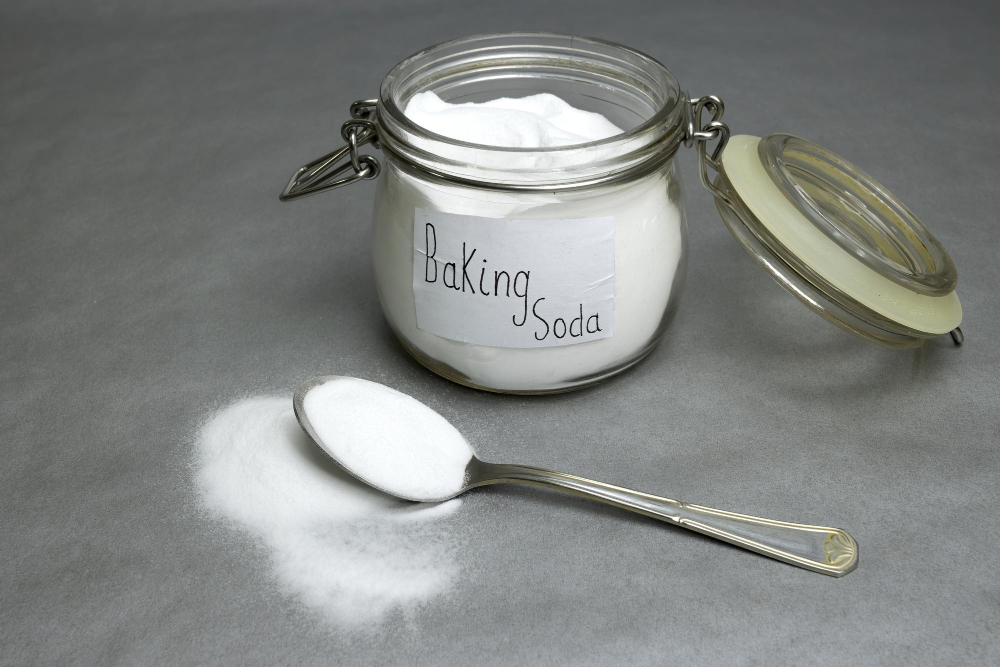
The key is identifying the type of stain and using the right cleaning solution.
For organic stains like coffee, tea or food spills, use a mixture of baking soda and water. Apply it directly onto the stain and let it sit for 5-10 minutes before scrubbing gently with a soft-bristled brush.
For oil-based stains such as grease or cooking oil spills, use an alkaline cleaner that’s specifically designed for stone floors. Mix one part cleaner with three parts warm water in a bucket then apply it onto the stained area using a mop or sponge.
Ink stains can be removed by applying rubbing alcohol directly onto them then wiping away any residue after several minutes have passed.
Rust marks require special treatment since they’re difficult to remove from porous surfaces like natural stones. Use oxalic acid mixed with warm water following manufacturer instructions carefully when dealing with rust marks on your stone floor tiles.
Deep Cleaning Process
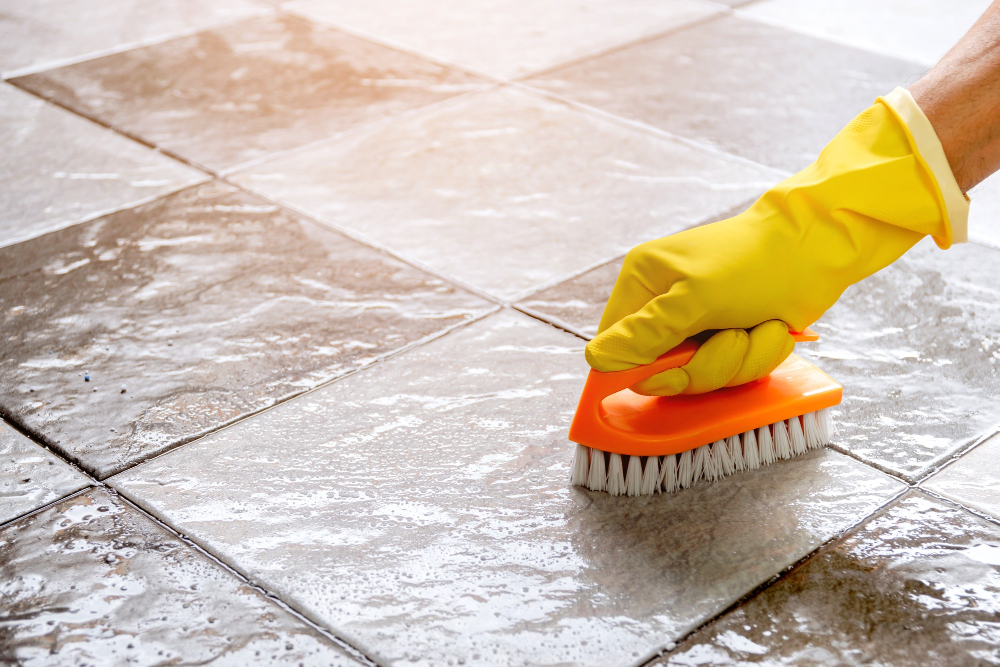
A deep clean will also help restore the natural shine and luster of your stone floor.
To begin with, you need to clear out all furniture and other items from the room. Sweep or vacuum up any loose debris on the floor surface before starting with a thorough wash down using warm water mixed with a pH-neutral cleaner specifically designed for use on natural stones.
Next, use a soft-bristled brush or scrubber pad to work in circular motions across each tile’s surface area gently. Be sure not to apply too much pressure as this can damage delicate surfaces like marble tiles.
Once you’ve finished scrubbing every inch of your stone flooring thoroughly, rinse it off using clean water until there are no more suds left behind. Dry off excess moisture by wiping down each tile individually using a microfiber cloth or mop head attachment if available.
How to Clean Grease and Dirt From Stone Floors

If left untreated, they can also cause permanent damage to the surface of your flooring. Fortunately, there are several effective ways to clean grease and dirt from stone floors.
One of the most important things you need to do is act quickly when you notice any spills or stains on your floor. The longer they sit, the harder it will be to remove them later on.
To clean up grease or oil spills from a stone floor, start by blotting up as much of the liquid as possible with a paper towel or cloth. Then sprinkle baking soda over the affected area and let it sit for 10-15 minutes before sweeping it away with a soft-bristled brush.
For stubborn stains caused by food residue or other types of grime buildup, mix warm water with mild dish soap in a bucket until suds form then use this solution along with an appropriate cleaning tool like microfiber mop pads (avoid using abrasive materials) for scrubbing off all traces of dirt without damaging delicate surfaces such as marble tiles which require special care due their porous nature.
Preventative Measures
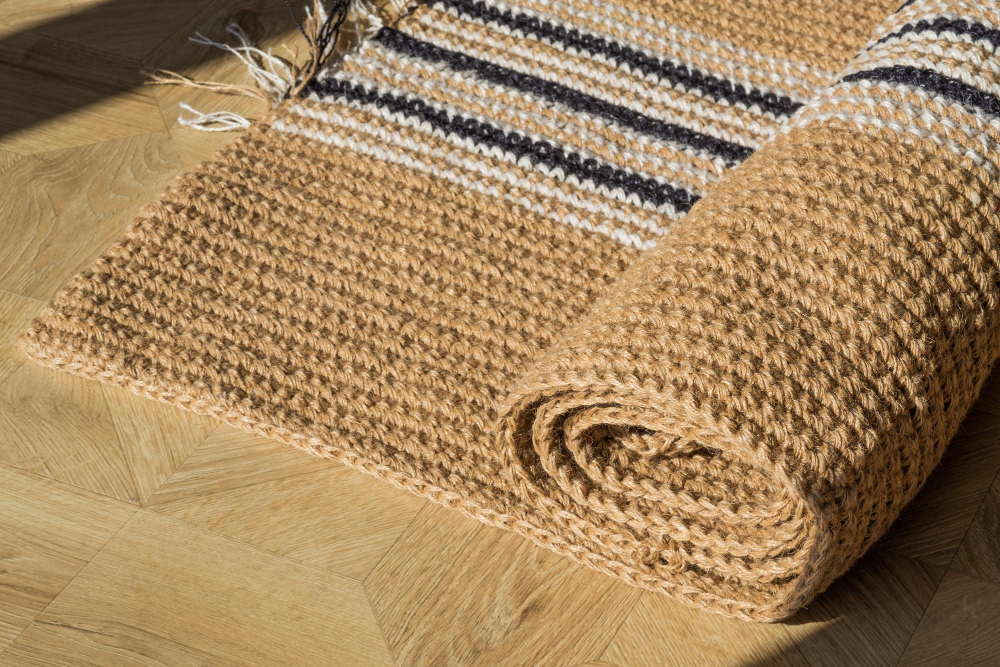
One of the most important things you can do is to place mats or rugs at entryways and high-traffic areas. This will help prevent dirt, sand, and other debris from scratching or damaging the surface of your stone floor.
Another preventative measure is to avoid using harsh chemicals on your stone floors. Acidic cleaners like vinegar and lemon juice can etch away at the surface of natural stones like marble or limestone over time, causing permanent damage.
It’s also a good idea to clean up spills as soon as they happen before they have a chance to seep into porous stones like travertine or slate. Use a soft cloth dampened with warm water for quick cleanups.
The Role of Sealants
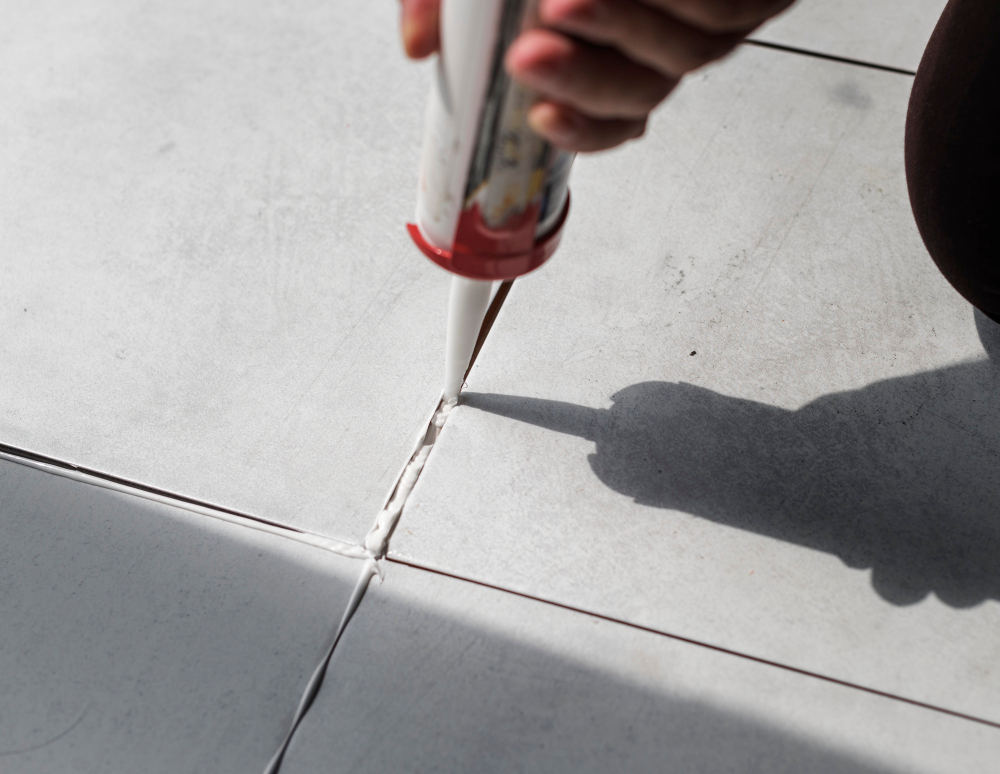
They act as a protective layer that prevents dirt, stains, and other contaminants from penetrating the surface of your flooring material. Applying sealant to your stone floor tiles can also help prevent scratches or chips caused by heavy foot traffic or accidental drops.
When it comes to choosing a sealant for your stone floors, there are several options available on the market. Some popular choices include topical sealers, which sit on top of the surface and provide an extra layer of protection against spills and stains; impregnating sealers that penetrate deep into porous stones like marble or limestone; color-enhancing sealer that brings out natural colors in stones like granite.
It’s important to note that not all types of stones require sealing – some materials such as slate do not need any additional treatment due to their low porosity levels. However, if you’re unsure whether you should apply a sealer on your specific type of stone floor tile then consult with an expert before proceeding with any application process.
How to Seal Stone Floor Tiles

Sealing helps protect the surface from stains and damage caused by spills or foot traffic. It also makes cleaning easier in the future.
To seal your stone floor tiles, start by choosing a high-quality sealer that is appropriate for your specific type of stone. There are many different types of sealers available on the market, so make sure to read labels carefully before making a purchase.
Before applying any sealer, ensure that your floors are completely dry and free from dust or debris. Apply an even coat of sealer using a clean mop or roller brush and allow it to soak into the surface for at least 10-15 minutes.
After this time has passed, use a clean cloth or towel to wipe away any excess sealer that may be left on top of the tile’s surface. Allow ample drying time as per manufacturer instructions before walking over sealed areas again.
Remember always follow safety precautions when working with chemicals like sealing agents; wear gloves and protective clothing if necessary.
Applying a Stain Prevention Layer On Stone Floors
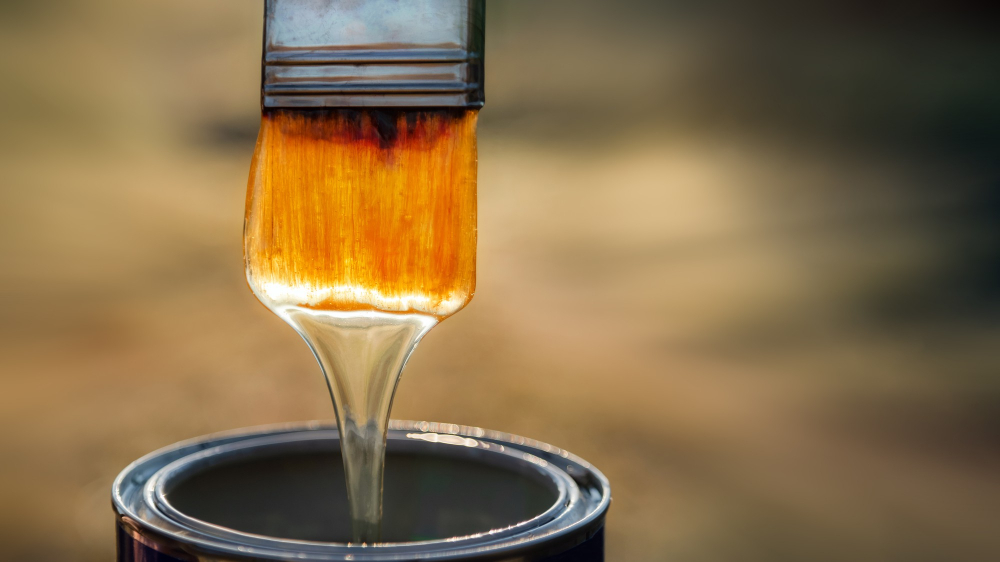
This process involves applying a sealant to the surface of your stone floor, which creates an invisible barrier that prevents liquids from penetrating the porous surface of the stones. The sealant also helps to repel dirt and other debris, making it easier to clean your floors regularly.
To apply a stain prevention layer on your stone floor, you’ll need first to ensure that it’s thoroughly cleaned and dried. Once this is done, you can then apply the sealant using either a brush or roller applicator.
It’s important not to over-apply as excess sealer can create unsightly streaks or even damage some types of stones.
It’s worth noting that different types of stones require different types of sealants; therefore, it’s crucial always read manufacturer instructions before application carefully.
Addressing Damaged or Worn Stones
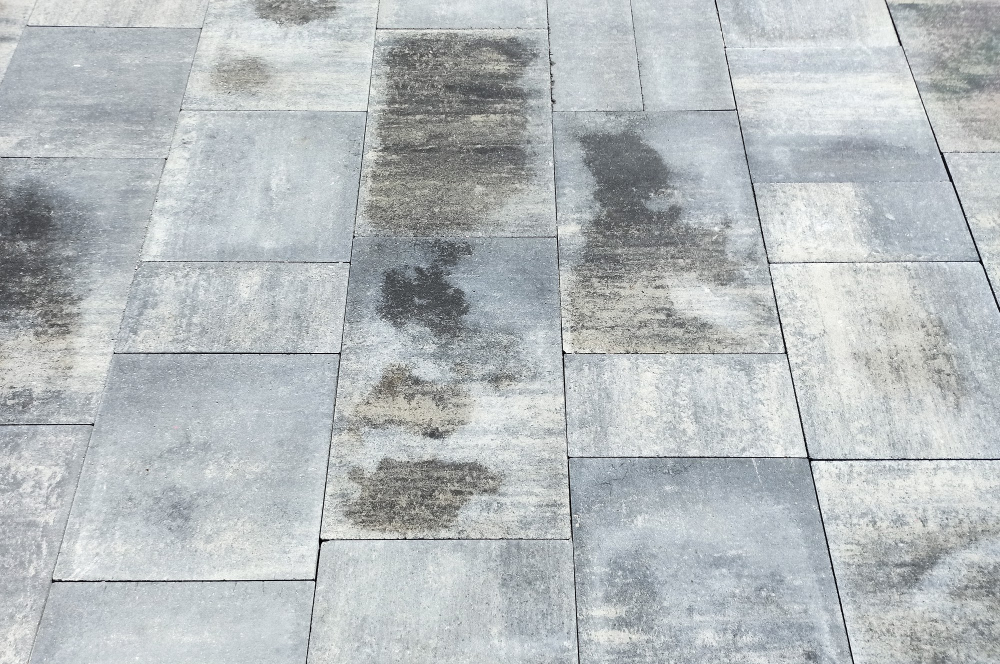
Cracks and chips can lead to further damage if left untreated, and they can also be a safety hazard for anyone walking on the floor.
The first step in addressing damaged or worn stones is identifying which ones need attention. Inspect your stone floors carefully, looking for any signs of cracks, chips or scratches that may require repair.
Once you’ve identified the problem areas, consider whether it’s something you can fix yourself with a DIY kit from your local hardware store or if professional help is needed.
For minor issues like small cracks and chips in individual tiles, there are DIY kits available that allow homeowners to fill in these gaps themselves using epoxy resin mixed with color-matching pigment.
However, more significant damage such as large cracks across multiple tiles may require professional assistance from an experienced stone restoration company who will assess the extent of the damage before recommending appropriate repairs.
DIY Cleaning Vs. Professional Services

DIY cleaning methods can sometimes cause more harm than good, especially if you’re using harsh chemicals or abrasive tools that could damage the surface of your stone floor. Some stains and damages require professional attention to ensure they are properly addressed.
Professional services have access to specialized equipment and products that are designed specifically for use on different types of stone flooring. They also have trained technicians who know how to handle various issues such as deep-seated stains or scratches without causing further damage.
If you’re unsure about whether to clean your stone floors yourself or hire a professional service, consider factors such as the type of stain/damage present on your floor and its severity level before making a decision. It’s important to note that while hiring professionals may come at an additional cost compared with DIY solutions; it is often worth investing in their expertise for long-term maintenance benefits.
Common Mistakes to Avoid
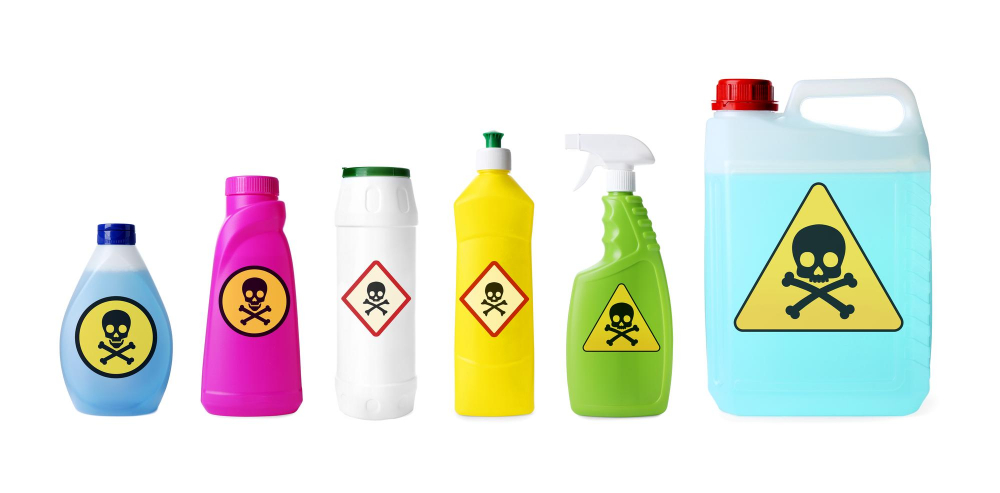
One of the most significant errors is using acidic or abrasive cleaners on natural stones like marble and granite. These types of cleaners can cause etching, scratches, and dullness on the surface of your stone floor tiles.
Another mistake to avoid is using too much water when mopping your stone floors. Excessive moisture can seep into porous stones like limestone and travertine causing discoloration or even damage over time.
Lastly, neglecting regular maintenance routines such as sweeping up dirt particles before they become embedded in the flooring material can lead to more challenging cleaning tasks down the line.
Safety Precautions for Cleaning

First and foremost, make sure that the area is well-ventilated by opening windows or turning on fans. This will help prevent inhaling any harmful fumes from cleaning products.
Wear protective gear such as gloves and goggles to protect your skin and eyes from harsh chemicals. Also, be careful when handling heavy equipment like floor buffers or steam cleaners.
It’s also important to keep children and pets away from the area while you’re cleaning. Some of the chemicals used in stone floor cleaners can be toxic if ingested.
Recommended Stone Floor Cleaners

Using harsh chemicals or abrasive cleaners can damage your floor’s surface and cause discoloration. Therefore, it’s essential to choose a cleaner that is specifically designed for use on stone surfaces.
There are many different types of cleaners available in the market today, but not all of them are suitable for every type of stone flooring. For example, acidic cleaners should be avoided when cleaning marble floors as they can etch and dull its surface.
To ensure you’re using the right product for your specific type of flooring material; always read labels carefully before purchasing any cleaner. Some recommended brands include StoneTech All-Purpose Daily Cleaner or Granite Gold Stone & Tile Floor Cleaner.
Maintaining a Clean Stone Floor
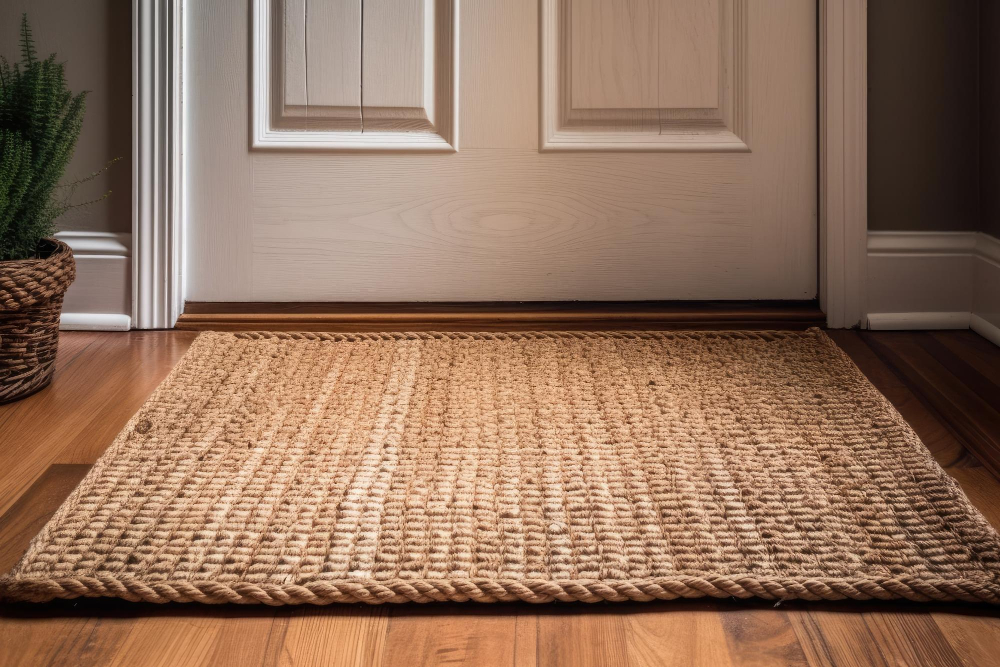
Here are some tips for maintaining a clean stone floor:
1. Sweep or vacuum regularly: Dirt and debris can scratch the surface of your stone floors, so it’s essential to sweep or vacuum them regularly.
2. Wipe up spills immediately: Spills can stain and damage your stone floors if left unattended for too long.
Be sure to wipe up any spills as soon as they happen.
3. Use doormats: Place doormats at all entrances leading into the kitchen area; this will help prevent dirt from being tracked onto the floor.
4. Avoid harsh chemicals: Harsh chemicals like bleach and ammonia can damage natural stones such as marble, limestone, travertine etc., so avoid using these types of cleaners on your flooring.
5. Reapply sealant when necessary: Over time, sealants wear off due to foot traffic in high-traffic areas; therefore reapplying a new layer is crucial in protecting against stains and scratches.
By following these simple steps above consistently over time will ensure that you have beautiful-looking Stone Floors that last longer than expected!
FAQ
What is the best cleaner for stone kitchen floor?
The best cleaner for a stone kitchen floor is a neutral pH cleaner like OdoBan No Rinse Neutral pH floor cleaner or dish soap with a neutral pH, though products specifically designed for stone are available.
What is the best way to clean a natural stone floor?
The best way to clean a natural stone floor is by sweeping and vacuuming with a soft brush attachment for daily maintenance and effective removal of dirt and dust.
Is it OK to steam clean stone floors?
No, steam cleaning is not recommended for stone floors, as superheated water can damage the surface, increase staining risk, cause corrosion, and bring salts to the surface.
What precautions should be taken while cleaning stone floors to prevent damage?
To prevent damage while cleaning stone floors, use a neutral pH detergent, avoid acidic cleaners, and do not flood the floor with water.
Can regular household cleaning products be used on stone kitchen floors?
Yes, regular household cleaning products can be used on stone kitchen floors, but make sure they are specifically designed for stone surfaces to avoid damage.
How often should stone kitchen floors be professionally cleaned or maintained?
Stone kitchen floors should be professionally cleaned or maintained every 12 to 18 months.





